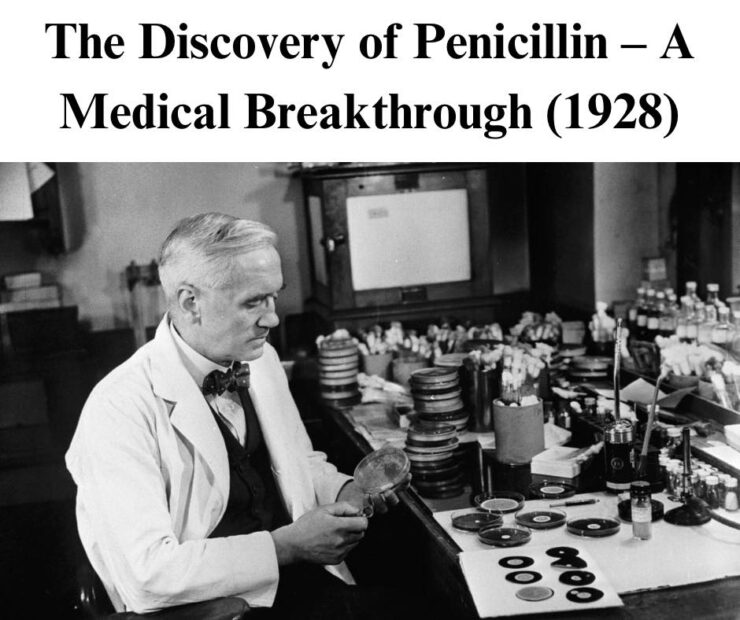
The Discovery of Penicillin – A Medical Breakthrough (1928)
In 1928, a moment of accidental brilliance in a London laboratory changed the world forever.
Alexander Fleming, a Scottish scientist, returned from holiday to find that a mold had killed the bacteria in one of his petri dishes.
That mold was Penicillium notatum, and what it produced — penicillin — would go on to become the first true antibiotic.
Why It Mattered:
•Before penicillin, even small infections could be fatal.
•Fleming’s discovery revolutionized medicine, allowing doctors to treat diseases like pneumonia, syphilis, strep throat, and sepsis.
•It became a lifesaver in World War II, reducing deaths from infected wounds by huge margins.
Development & Impact:
•Though Fleming discovered it, it was Howard Florey, Ernst Chain, and others who developed it into a usable drug during the 1940s.
•It became known as the “wonder drug”, launching the antibiotic era.
•Millions of lives have been saved since — and penicillin inspired the development of many more antibiotics.
Legacy:
•Fleming won the Nobel Prize in 1945, sharing it with Florey and Chain.
•The discovery of penicillin is still regarded as one of the greatest medical breakthroughs in history.
•It also sparked ongoing conversations about antibiotic resistance and the future of medicine.
The discovery of penicillin wasn’t just a scientific moment —
it was a gift to humanity that continues to save lives every single day.
